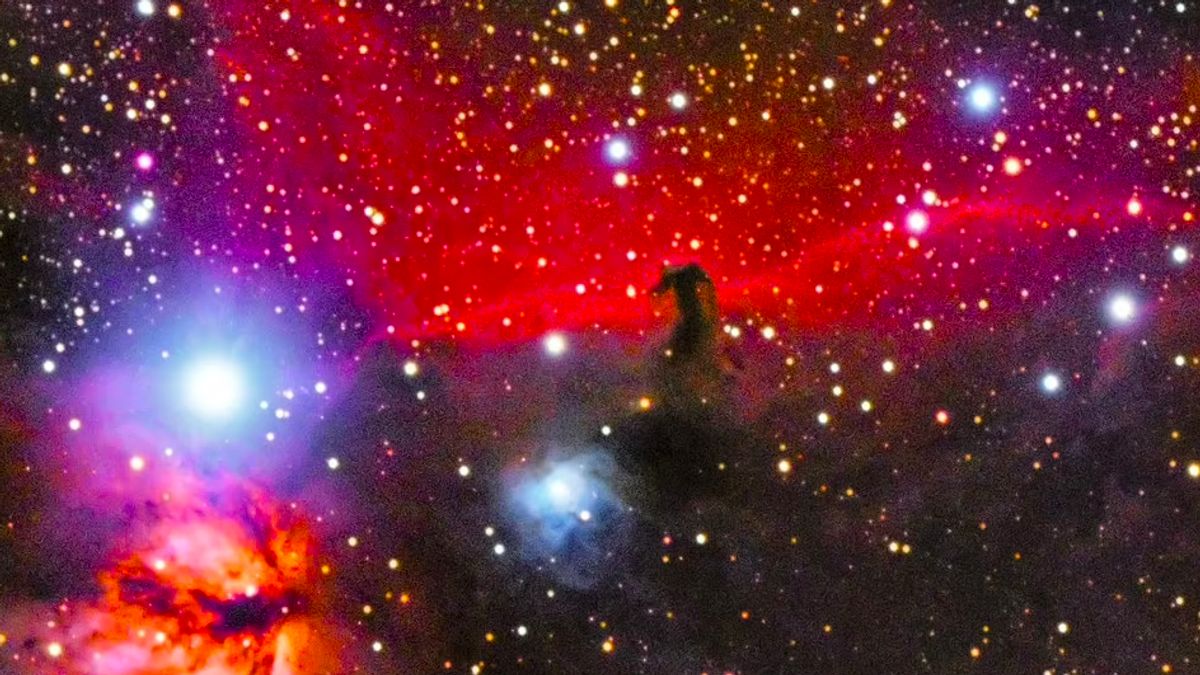JAKARTA - A Scottish amateur astronomer has taken stunning photos of a distant nebula and other astronomical wonders from a telescope in his East Ayrshire park.
Bryan Shaw, 28, has spent hours tracing the night sky to produce stunning images of nebulae and star clusters thousands of light-years away.
Shaw, who is currently a broadcast production student, regularly installs a special telescope in the garden of his home in New Cumnock, a town in East Ayrshire, to photograph the night sky.
These highlights include the Orion Nebula, about 1.344 light-years from Earth, and the Rosette Nebula, an open star cluster with a rose-like cloud of cosmic gas and dust more than 5.000 light-years away.
Well done to Scottish back garden astrophotographer Bryan Shaw; his pics in @thetimes and Daily Express today.
Bryan sets up a specialised telescope at his home in New Cumnock, a town in East Ayrshire, and focuses on his far-off subjects.
Via @SWNS pic.twitter.com/l00ZghejhY
— Dean Murray (@DeanMurraySWNS) March 12, 2022
He has also captured beautiful landscape images showing the aurora, our moon up close, and views of galaxies including our Milky Way. One-shot also shows the North American Nebula in the constellation Cygnus, near Deneb.
This nebula is named North America because in visible light, the area resembles the continent of North America, with the most striking resemblance being the Gulf of Mexico.
A nebula is a very large cloud of dust and gas that occupies the space between stars and acts as a nursery for new stars. Nebulae form when stars larger than our sun begin to die and emit solar wind gas.
Shaw also captured a shot of the Rosette Nebula on March 4 and posted it to a local community group the following day.
"Clear nights are rare, so I snapped this from the front garden last night under a streetlight," Shaw said.
Another of the incredible Shaw nebula shots shows the Orion Nebula, a diffuse nebula located in the Milky Way, near the southern side of the Orion Belt in the constellation Orion.
It is one of the brightest nebulae and is visible to the naked eye in the night sky.
"These stellar nurseries have been known to many different cultures throughout human history," NASA said of the Orion Nebula.
Another image shows the Fire Nebula and the Horsehead Nebula, both part of a star-forming region called the Orion Molecular Cloud Complex.
SEE ALSO:
The Horsehead Nebula is so named because of its uncanny resemblance to a small horse, as seen in the deep red coloration caused by ionized hydrogen gas.
Nebulae are often named after what scientists think are similarities to Earth-based objects or characters, including cat claws, tarantulas, and hoods.
Astronomers have also seen black widow spiders, Hallowe'en lanterns, snakes, exposed human brains, and the Starship Enterprise.
Another shot shows the Andromeda Galaxy, also known as Messier 31 or M31, which is the closest large spiral galaxy to our galaxy, the Milky Way.
The Andromeda Galaxy gets its name from the fact that it appears in Earth's sky in the constellation Andromeda.
It was first observed around 964 and was originally dubbed the nebulous smear. It wasn't until the 1920s that it became known as the galaxy.
It is roughly the same size as the Milky Way – a trillion solar masses – and one day the two will collide. They are expected to unite in about 4.5 billion years and form a giant elliptical galaxy.
Another image shows an asterism called the Pleiades, also known as The Seven Sisters, Messier 45, and other names from different cultures.
The Pleiades, about 440 light-years away, lies near the shoulder of Taurus, the larger constellation to the right of Orion's Belt.
"It contains more than a thousand stars loosely bound by gravity, but visually dominated by a handful of the brightest members," NASA said.
The English, Chinese, Japanese, Arabic, and French versions are automatically generated by the AI. So there may still be inaccuracies in translating, please always see Indonesian as our main language. (system supported by DigitalSiber.id)















